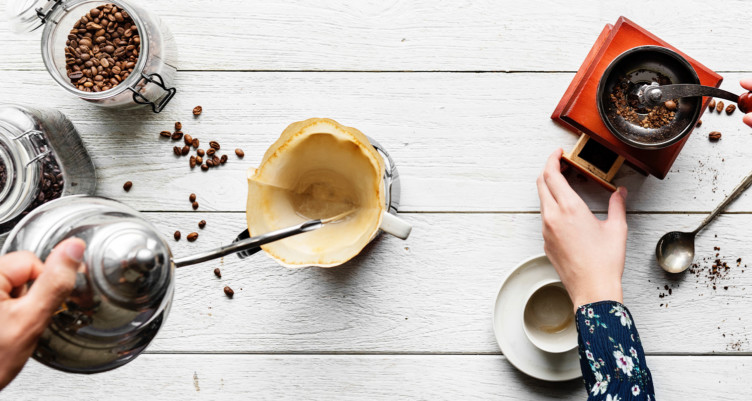The Science Behind Coffee Developing: How Temperature and Time Affect Your Beverage
Comprehending the science behind coffee brewing discloses that temperature and time are not mere variables yet pivotal elements that determine the beverage's taste profile and total quality. The ideal developing temperature usually falls between 195 ° F and 205 ° F, while the duration of removal varies considerably throughout various techniques. This interplay of elements can result in a mug that is either fascinating or frustrating. As we explore the nuances of these components, the inquiry emerges: exactly how can one properly balance temperature and time to achieve that excellent mixture?
The Chemistry of Coffee Removal
The chemistry of coffee removal explores the elaborate procedures that transform raw coffee beans right into the fragrant beverage taken pleasure in worldwide. This makeover mostly includes the solubility of various compounds existing in the beans, which are affected by variables such as grind dimension, water high quality, and the brewing method used.
During the developing procedure, hot water works as a solvent, drawing out soluble substances, consisting of caffeine, sugars, lipids, and acids, from the coffee grounds. Each substance contributes to the flavor account, fragrance, and body of the last drink. Acids are responsible for tasty and brilliant notes, while oils contribute to an abundant mouthfeel.
The removal process is not consistent; various substances dissolve at different rates. The preliminary phases of developing extract acids and sugars, bring about a pleasant level of acidity, while prolonged removal can lead to resentment because of over-extraction of unfavorable compounds. Comprehending these chemical interactions is essential for optimizing developing techniques, as the balance in between removal time and water temperature level can dramatically influence the total quality of the coffee. Ultimately, understanding the chemistry of coffee removal is key to achieving a all-around and delicious mug.
Suitable Brewing Temperatures
Finding the ideal brewing temperature level is crucial for opening the complete possibility of coffee flavors and fragrances - coffee brewing methods. Study indicates that the optimum range for developing coffee lies between 195 ° F to 205 ° F(90 ° C to 96 ° C) Within this range, the extraction process effectively liquifies the desirable soluble compounds in coffee beans, causing a flavorful and balanced mug
Developing at lower temperatures, such as listed below 195 ° F(90 ° C ), may cause under-extraction, yielding an acidic and weak mixture with low-key tastes. Conversely, brewing at temperatures surpassing 205 ° F(96 ° C) can lead to over-extraction, generating a extreme and bitter preference due to the too much dissolution of undesirable compounds, such as tannins.
Moreover, the ideal developing temperature level can vary depending on the coffee bean kind and roast degree. As an example, lighter roasts often take advantage of a little greater temperatures to boost their intricate flavor accounts, while darker roasts may be better fit to lower temperature levels to mitigate anger.
Eventually, maintaining precision in brewing temperature levels is crucial for accomplishing an unified balance of tastes, ensuring that every mug of coffee supplies a rewarding sensory experience.
Influence of Brewing Time
Brewing time plays a pivotal duty in identifying the taste profile and overall quality of coffee. Shorter developing times can result in under-extraction, leading to a weak or sour taste, as not sufficient soluble compounds are dissolved.
Optimum developing time differs relying on the approach made use of and the grind dimension of the coffee. A French press generally requires regarding four minutes, while espresso removal is generally completed within 25 to 30 secs. It is vital to adjust brewing time in conjunction with other variables, such as water temperature level and coffee-to-water ratio, to accomplish the preferred taste account.
Comprehending the effect of brewing time allows coffee fanatics to refine their developing methods, eventually improving the sensory experience of their mug (coffee brewing methods). With careful focus to this variable, one can unlock the full capacity of the coffee, exposing its distinct attributes and nuances
Brewing Approaches and Their Effects

For go to this site circumstances, methods like French press and cool brew permit for a much longer steeping time, resulting in a fuller body and robust taste because of boosted removal of oils and soluble solids. On the other hand, coffee brewing utilizes high pressure and a shorter extraction time, generating a focused shot that highlights extreme flavors and an abundant crema.
Pour-over techniques, such as Chemex or V60, provide a more controlled extraction process, allowing the maker to adjust circulation rate and water distribution, which can improve brightness and clarity. Meanwhile, percolation approaches cycle water via the coffee premises multiple times, causing a more powerful, frequently bitter taste.
Finally, the usage of paper filters versus metal filters can also impact the last taste; paper filters commonly generate a cleaner cup by trapping oils and fine particles, while metal filters enable more oils to go through, adding to a fuller mouthfeel - coffee brewing methods. Recognizing these nuances can elevate the coffee experience dramatically
Tips for Improving Your Brew
A well-executed mixture can transform even the easiest coffee into an exceptional experience. Grind the beans just before brewing to take full advantage of quality, making this hyperlink certain the work dimension matches your brewing technique-- coarser for French press and finer for espresso.
Water high quality plays a critical duty; usage filtered water cost-free from pollutants. The excellent developing temperature varies between 195 ° F and 205 ° F(90 ° C to 96 ° C ) Also warm can blister the coffee, while also trendy may under-extract flavors.
Timing is similarly important. For immersion techniques, soaking for 3 to five minutes is ideal, whereas drip methods commonly take about 5 minutes. Explore mixture times to find your preferred toughness.

Final Thought
In summary, the complex connection between temperature and time is critical in the coffee developing procedure. Abiding by optimal developing temperatures between 195 ° F and 205 ° F, along with precise timing tailored per method, makes sure the wanted flavor profile is accomplished. Understanding these scientific principles encourages people to improve their brewing techniques, ultimately leading to a much more balanced and delightful coffee experience. Mastery of these elements is vital for any type of coffee enthusiast looking for quality in their drink.
Recognizing the scientific research behind coffee developing exposes that temperature level and time are not simple variables but crucial elements that dictate the drink's taste profile and overall quality. Comprehending these chemical communications is vital for optimizing brewing methods, as the equilibrium between removal time article and water temperature level can dramatically affect the total top quality of the coffee.Developing time plays a pivotal role in determining the taste profile and overall quality of coffee. By focusing on these components-- bean high quality, grind dimension, water temperature level, soaking time, and ratio-- you can elevate your coffee brewing procedure, resulting in a regularly superior cup.
In recap, the elaborate connection in between temperature level and time is extremely important in the coffee brewing process.